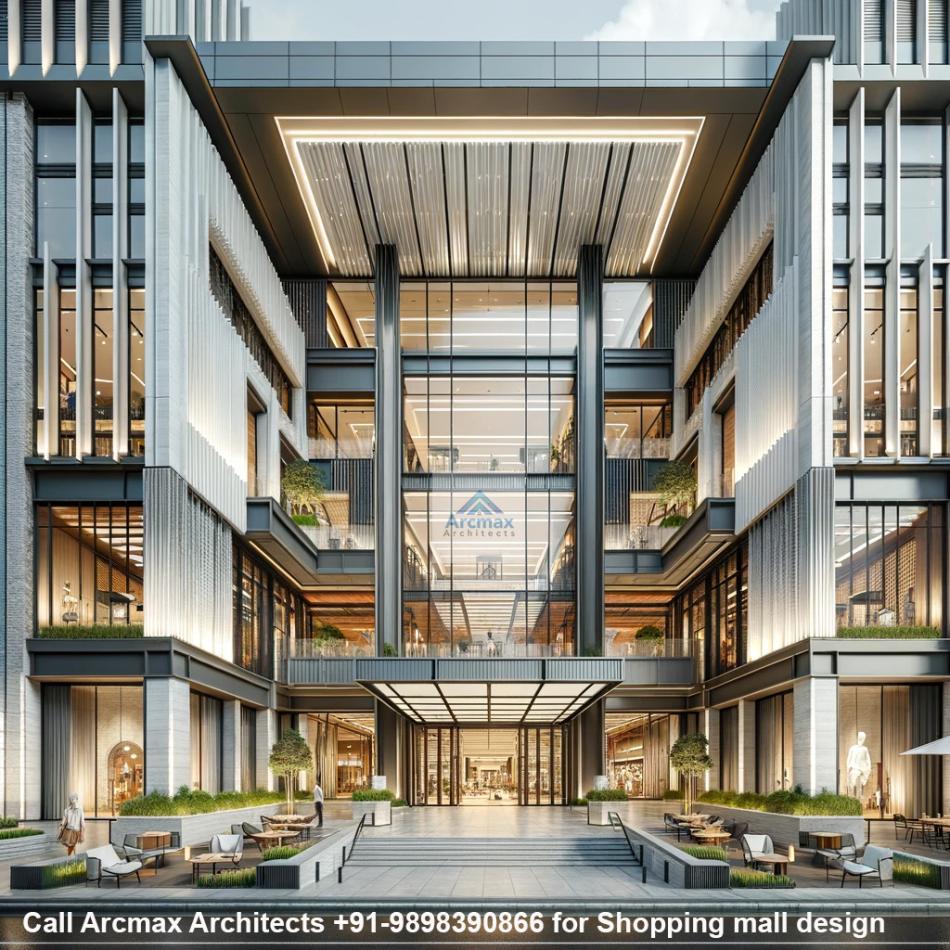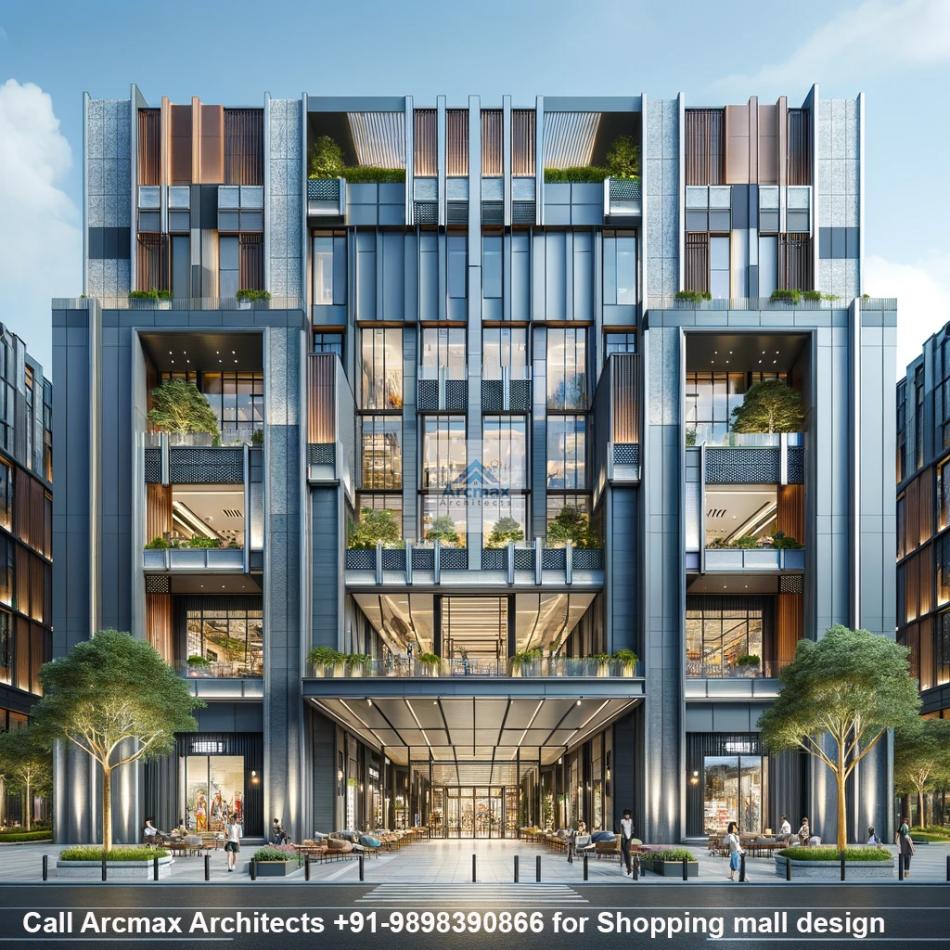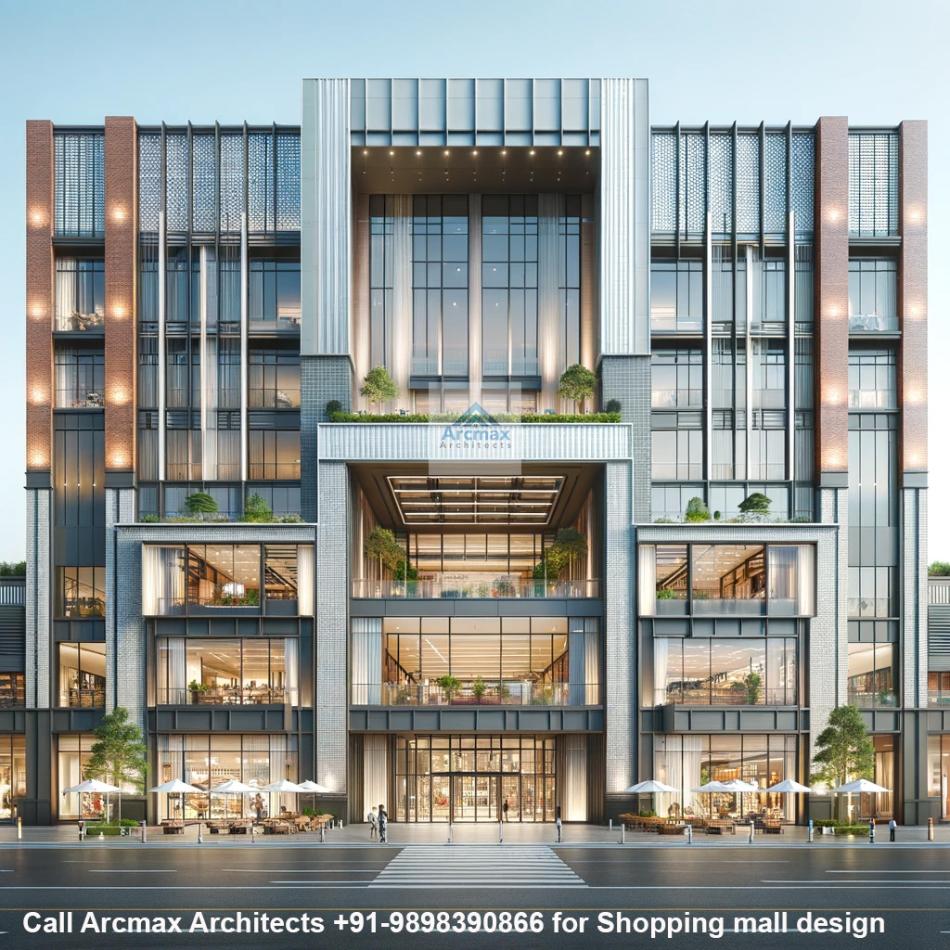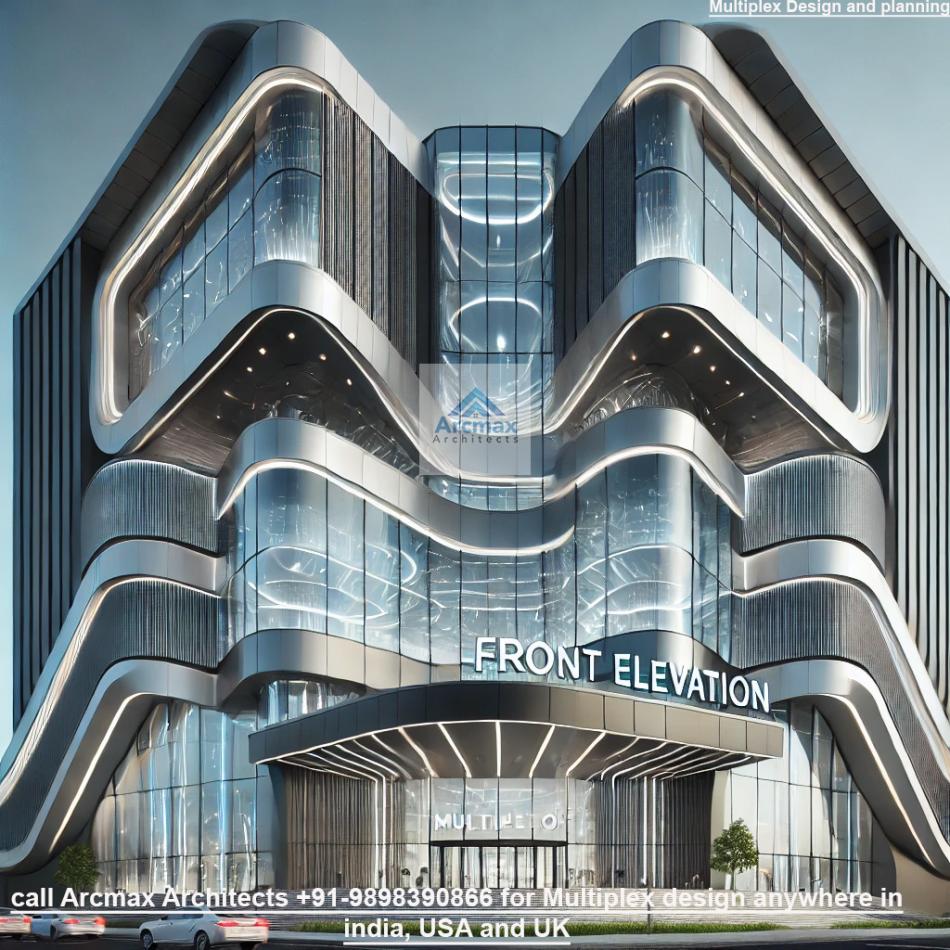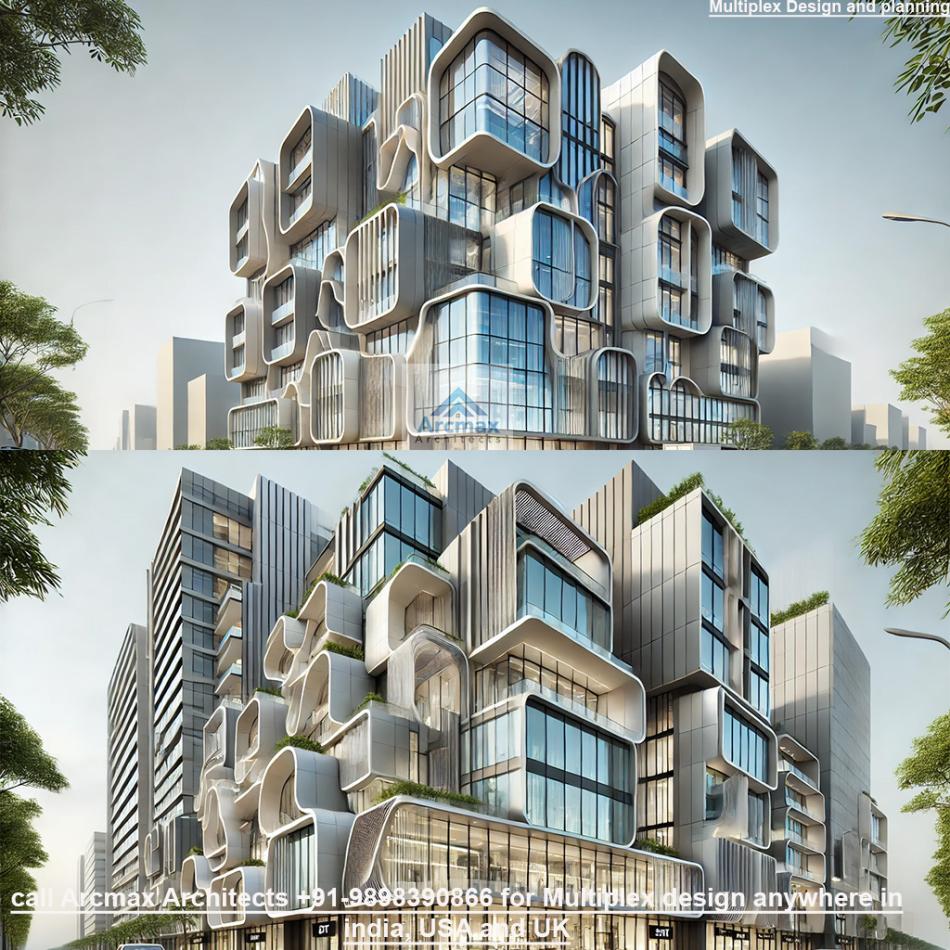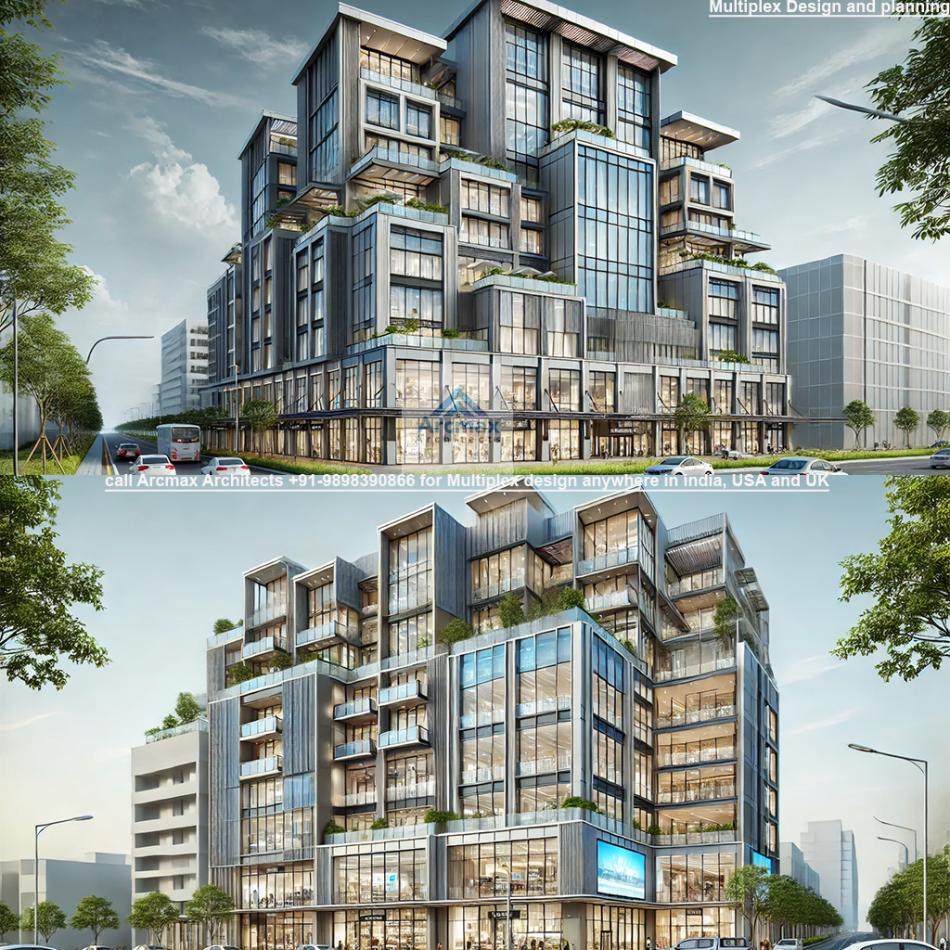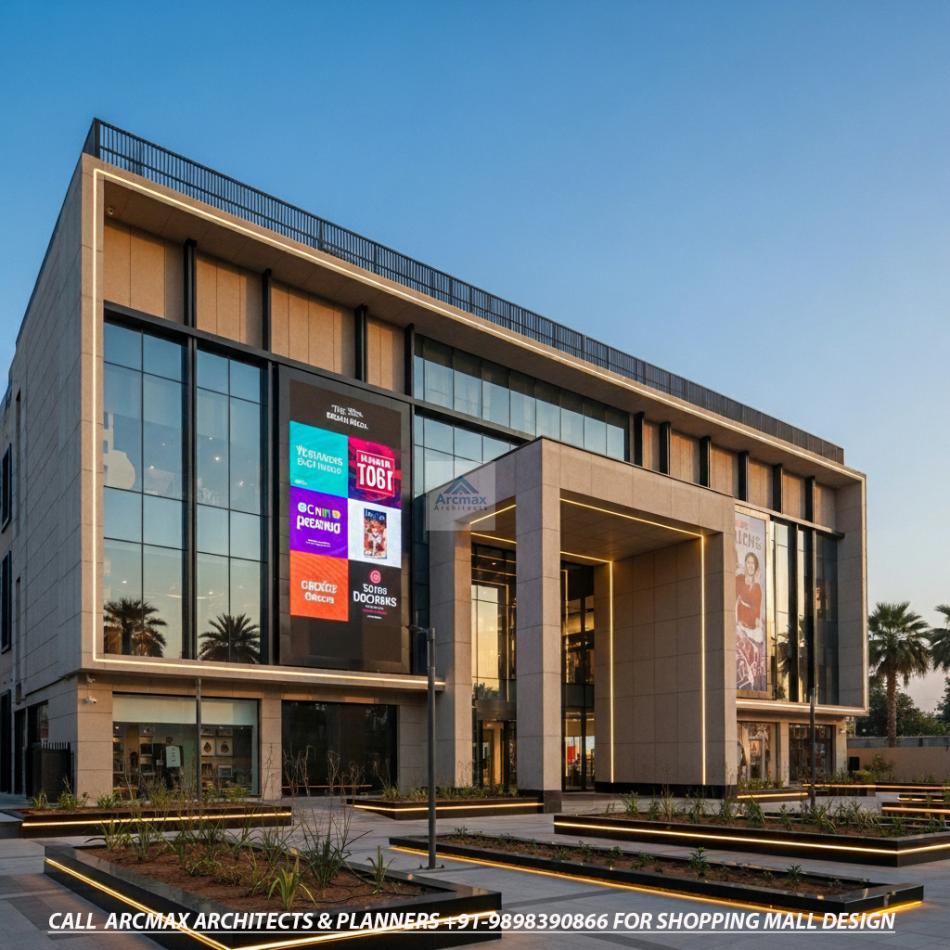Bakeri City, Pincode: 380015 Ahmedabad, Gujarat, India,
244 Madison Avenue, New York, United States
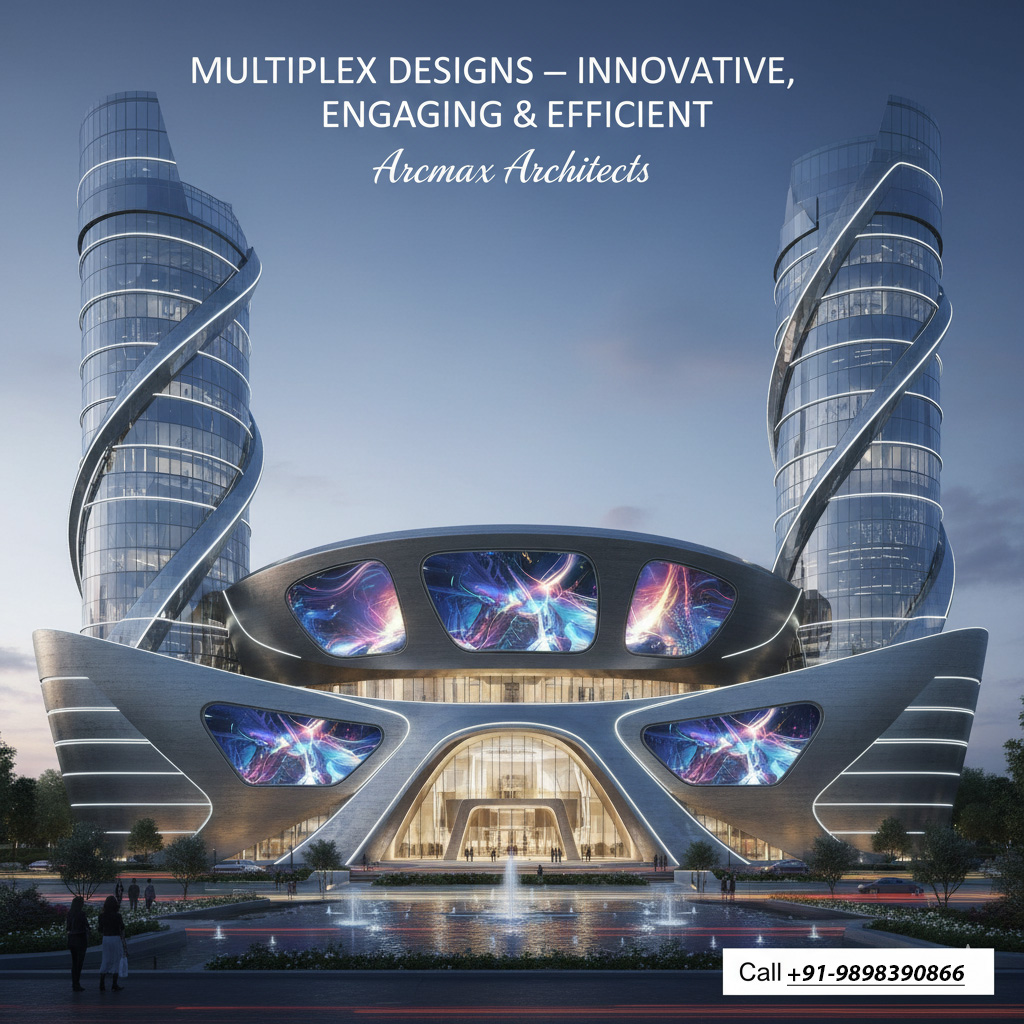
Our Client


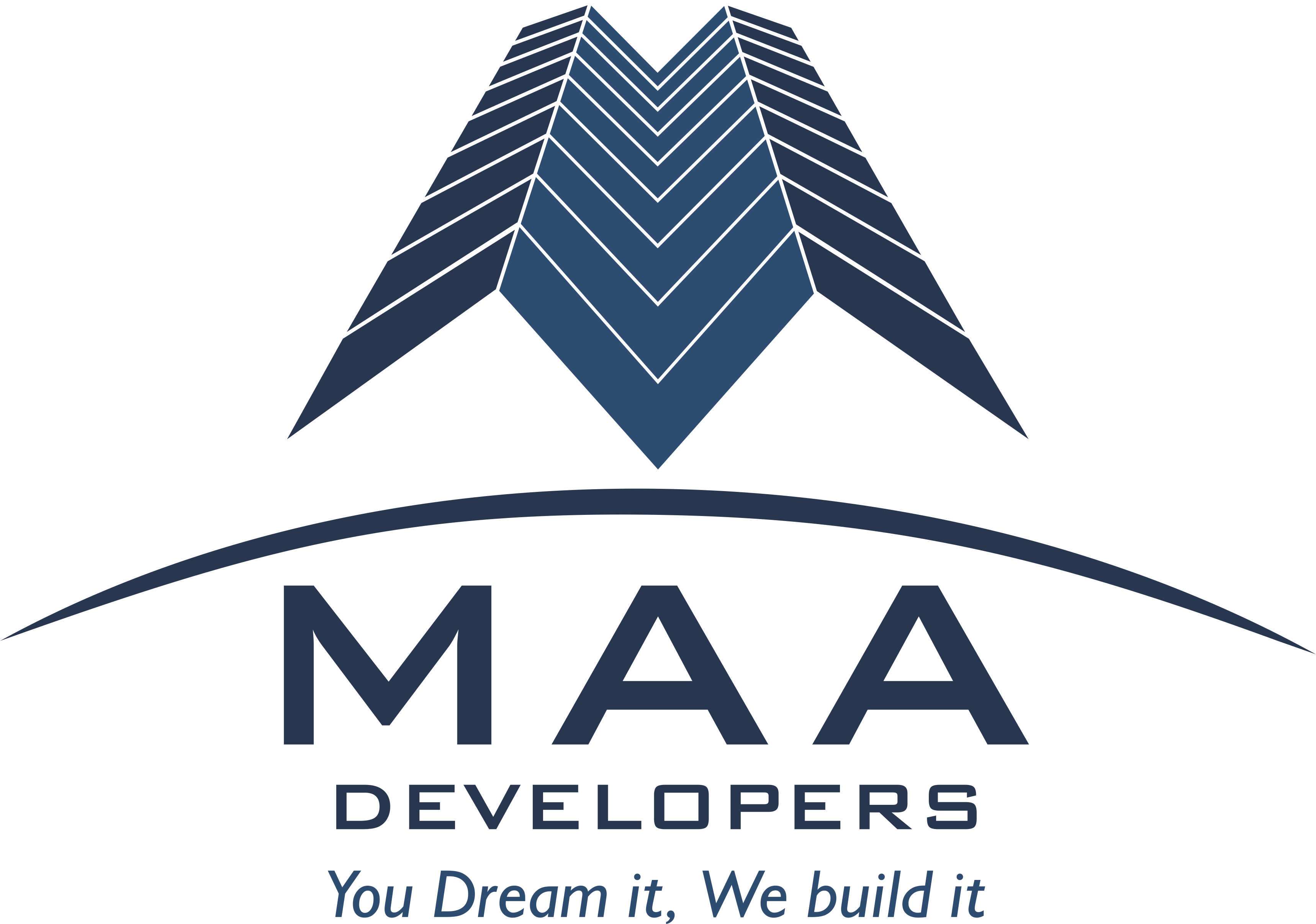



Multiplex Design Services
Multiplex Designs – Architecture, Interiors, and Innovation by Arcmax Architects, call +91-9898390866
1. Introduction to Multiplex Designs
Multiplexes have become a cornerstone of modern urban life — they’re not just spaces for watching movies but vibrant social destinations blending entertainment, leisure, and lifestyle. A multiplex design combines architecture, engineering, and interior design to create a unified experience that serves thousands of visitors daily while ensuring comfort, safety, and functionality.
A multiplex typically consists of multiple cinema screens housed within one complex, often integrated with restaurants, retail areas, gaming zones, and lounges. The success of such spaces depends largely on how well they are designed — the flow of movement, acoustical precision, seating arrangement, lighting mood, and aesthetic appeal all define the quality of user experience.
The importance of design in multiplexes cannot be overstated. A well-planned multiplex enhances viewer comfort, maximizes operational efficiency, and boosts revenue through optimized space utilization. This article explores the key elements, trends, challenges, and future of multiplex design while offering practical insights for architects, investors, and developers aiming to create world-class entertainment destinations.
Read More about Our Multiplex Designs here
2. Key Elements of Multiplex Design
Designing a multiplex involves harmonizing architecture, interior design, acoustics, and technology into a cohesive system. Each element plays a crucial role in delivering an unforgettable entertainment experience.
a. Architectural Considerations
A multiplex is typically designed to accommodate multiple auditoriums, a grand lobby, ticketing zones, food courts, restrooms, projection areas, and back-of-house facilities. Key architectural considerations include:
Efficient space utilization: The design should balance screen count with circulation areas, ensuring seamless movement of large crowds during peak hours.
Zoning: Clear zoning between public and service areas minimizes operational conflicts and enhances safety.
Flexibility: Modular design allows future upgrades, such as converting a 2D hall into a 3D or IMAX theatre.
Integration with commercial spaces: Many multiplexes are part of shopping malls or standalone mixed-use buildings, requiring coordination between entertainment, retail, and hospitality functions.
b. Interior Design Elements
The interiors of a multiplex shape audience perception and comfort. Key aspects include:
Seating arrangement: Ergonomically designed reclining seats, ample legroom, and optimal sightlines from every angle ensure a superior viewing experience.
Lighting: Layered lighting design combines ambient, accent, and task lighting for dramatic effects before and after the movie. Dimmable LED systems enhance mood while saving energy.
Acoustics: Soundproofing and acoustic wall treatments are vital. High-density materials, absorbent panels, and optimized speaker placement ensure balanced sound distribution without echo or leakage between halls.
Lobby and concession areas: Stylish and functional layouts encourage social engagement and enhance the multiplex’s brand identity.
c. Accessibility and Safety Features
Accessibility is a key part of modern multiplex architecture. Ramps, elevators, and wheelchair seating must comply with universal design standards. Safety features like fire-rated materials, sprinkler systems, and emergency exits ensure visitor protection while meeting building codes and local regulations.
3. Popular Trends in Multiplex Designs
Multiplex design has evolved dramatically over the last decade. The focus has shifted from basic functionality to immersive, tech-enabled, and eco-conscious experiences.
a. Modern Aesthetics
Today’s multiplexes adopt minimalist, futuristic, or thematic design concepts. From marble-clad foyers to LED-lit corridors and digital art walls, the goal is to create an environment that excites visitors even before they enter the auditorium.
b. Integration of Technology
Modern multiplexes leverage cutting-edge digital projection, Dolby Atmos sound systems, automated ticketing kiosks, and smart lighting controls. Architectural lighting synchronized with show timings, touchless entry systems, and digital wayfinding screens are becoming industry standards.
Some designs also integrate augmented reality (AR) and virtual reality (VR) experiences for enhanced interactivity — redefining what a visit to the cinema feels like.
c. Eco-friendly and Sustainable Designs
Sustainability is now a defining factor in multiplex projects. Architects increasingly use solar panels, rainwater harvesting systems, low-VOC paints, and energy-efficient HVAC systems to reduce operational costs and environmental impact. Recycled materials and LED lighting further minimize the carbon footprint while maintaining aesthetics.
4. Case Studies or Notable Examples
a. PVR ICON Luxe, Mumbai
This multiplex combines luxury and technology with custom-designed recliners, mood lighting, and premium finishes. The interiors feature art-inspired themes, and acoustic design ensures immersive sound clarity. The foyer’s reflective ceiling and marble flooring elevate its visual grandeur.
b. INOX Megaplex, Gurgaon
Spread over 60,000 sq. ft., INOX Megaplex is known for housing multiple formats — IMAX, 4DX, and ScreenX — under one roof. Its design blends futuristic digital elements with comfort, providing an unforgettable sensory experience. The design also includes energy-efficient lighting and advanced climate control.
c. Cinepolis, Ahmedabad
Cinepolis exemplifies efficient space planning with modular screens and a focus on customer circulation. Acoustic separation and vibrant interiors enhance both functionality and appeal. The café-style waiting area and color-coded zones improve wayfinding and visitor engagement.
Each of these examples demonstrates how thoughtful design can elevate a multiplex beyond mere entertainment — transforming it into a complete lifestyle experience.
5. Challenges in Multiplex Design
Designing multiplexes is complex, requiring balance between creative vision and practical constraints.
a. Balancing Aesthetics with Functionality
A multiplex must be visually captivating yet operationally efficient. Overly decorative designs can hinder traffic flow or complicate maintenance. The key lies in blending aesthetics with user comfort and ease of management.
b. Budget Constraints
Premium materials, advanced acoustic systems, and technology integration can drive up costs. Achieving an ideal balance between luxury and affordability requires strategic value engineering, without compromising safety or design intent.
c. Meeting Diverse Audience Needs
Multiplexes cater to a broad demographic — families, youth, and premium audiences. Designers must create inclusive spaces that appeal to all while maintaining brand identity. This means combining vibrant youth-centric zones with sophisticated lounges and child-friendly facilities.
6. Tips for Designing an Effective Multiplex
Here are some professional insights for architects, developers, and operators:
Start with space flow: Design the layout around people movement — from parking to ticketing, from lobby to auditorium. Ensure smooth navigation.
Optimize acoustics early: Plan wall and ceiling treatments during concept design, not after structural completion.
Prioritize comfort: Reclining seats, proper HVAC zoning, and ergonomic spacing enhance guest satisfaction and repeat visits.
Use dynamic lighting: Smart lighting can dramatically change the mood and energy of a multiplex, making it feel luxurious and welcoming.
Integrate branding: Consistent colors, materials, and signage build strong recall for cinema brands.
Leverage technology: Adopt automated ticketing, digital signage, and app-based seat booking to streamline operations.
Ensure safety and accessibility: Comply with fire safety norms, accessibility codes, and acoustic separation standards.
Avoid common mistakes: Ignoring soundproofing, underestimating HVAC load, or neglecting restroom capacity can harm both user comfort and business performance.
A well-designed multiplex balances art and engineering — where architecture meets experience.
7. Future of Multiplex Designs
As audience behavior evolves and streaming services reshape entertainment consumption, multiplex architecture must adapt to remain relevant.
a. Hybrid Entertainment Hubs
Future multiplexes will likely merge cinema with gaming, fine dining, VR zones, and event spaces — transforming into multi-experience entertainment centers rather than standalone theatres.
b. Personalized Experiences
Smart seat sensors, customizable lighting, and AI-powered temperature control will redefine comfort levels. Personalized greetings and digital loyalty systems may also become standard.
c. Sustainable and Adaptive Architecture
With rising energy costs and environmental awareness, the future points toward net-zero multiplexes powered by renewable energy and intelligent building systems. Adaptable modular auditoriums will allow quick reconfiguration for events, conferences, or e-sports screenings.
d. Impact of Changing Audience Preferences
Post-pandemic, audiences prefer spacious layouts, improved ventilation, and premium experiences. Designers are responding with boutique-style theatres that focus on quality over quantity — fewer screens but richer experiences.
8. Conclusion
A multiplex is more than just a cluster of movie halls — it’s a fusion of architecture, art, technology, and emotion. Successful multiplex design ensures that every visitor feels immersed from the moment they step inside, whether they’re buying popcorn or watching a film in surround sound perfection.
As demonstrated by global examples, a well-thought-out multiplex design enhances profitability, visitor engagement, and brand loyalty. By combining smart space planning, cutting-edge technology, and sustainable materials, architects can shape the entertainment destinations of tomorrow.
At Arcmax Architects, we specialize in multiplex design and planning across India and abroad, offering complete architectural, interior, and MEP services. Our approach blends creativity with precision — ensuring each project delivers exceptional aesthetics, operational efficiency, and long-term value.
If you’re planning a new multiplex, cinema chain, or entertainment hub project, connect with Arcmax Architects – India’s leading multiplex and entertainment space design experts.
Call or WhatsApp: +91-9898390866
Visit: www.arcmaxarchitect.com
Email: contact@arcmaxarchitect.com

